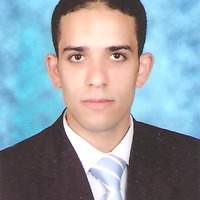The switched reluctance motor (SRM) drives have been widely used in aircraft applications due to the motor advantages like high speed operation, simple construction, no windings on rotor. But high torque ripples and acoustic noise are... more
The switched reluctance motor (SRM) drives have been widely used in
aircraft applications due to the motor advantages like high speed operation,
simple construction, no windings on rotor. But high torque ripples and
acoustic noise are main disadvantages. The current hysteresis chopping
control is one of the important control methods for SRM drives. These
disadvantages can be limited using the hysteresis or chopping current control.
This control strategy makes the torque of SRM maintained within a set of
hysteresis bands by applying suitable source voltage. This paper introduces two hysteresis control modes; hard chopping and soft chopping mode. The SRM drive system is modeled in Simulink model using MATLAB/SIMULINK software package.
aircraft applications due to the motor advantages like high speed operation,
simple construction, no windings on rotor. But high torque ripples and
acoustic noise are main disadvantages. The current hysteresis chopping
control is one of the important control methods for SRM drives. These
disadvantages can be limited using the hysteresis or chopping current control.
This control strategy makes the torque of SRM maintained within a set of
hysteresis bands by applying suitable source voltage. This paper introduces two hysteresis control modes; hard chopping and soft chopping mode. The SRM drive system is modeled in Simulink model using MATLAB/SIMULINK software package.
Research Interests:
This paper presents the effect of change the switching angles values on the operation of switched reluctance motor (SRM) at no-load in aircraft applications. Turn-on θon and turn-off θoff, angles are the two switching angles that play a... more
This paper presents the effect of change the switching angles values on the operation of switched reluctance motor (SRM) at no-load in aircraft applications. Turn-on θon and turn-off θoff, angles are the two switching angles that play a major role in deciding whether SRM develops positive or negative, high or low electromagnetic torque. These switching angles are considered as the main excitation parameters in SRM performance and also they support the most efficient operation through producing high value of total torque per ampere. The SRM, converter, and control system are modeled in Simulink model to demonstrate the drive system operation using MATLAB/SIMULINK software package. The simulated performance of SRM drive system is presented to analyze the effect of different switching angles on no-load performance of speed, current and torque. An optimum of turn-on and turn-off angles that ensures stable at no-load operation is recommended.
